Rubber plants, or Ficus elastica, are some of the most popular houseplants you can grow – but they definitely aren’t the smallest as they can reach up to 100 feet in height according to Florida University.
They grow quickly and voraciously, but the problem with their growth habit is that they tend to grow upward instead of outward, making them look weak, spindly, and leggy.
Fortunately, there are steps you can take to make your rubber plant look bushy.
Table of Contents
How to Make a Rubber Plant Bushy
To make your rubber plant bushy prune the plant to help it begin branching out. Do this with a pair of sharpened and sterilized shears to prevent infecting the plant. After pruning the tree will branch and expand outward from the node.
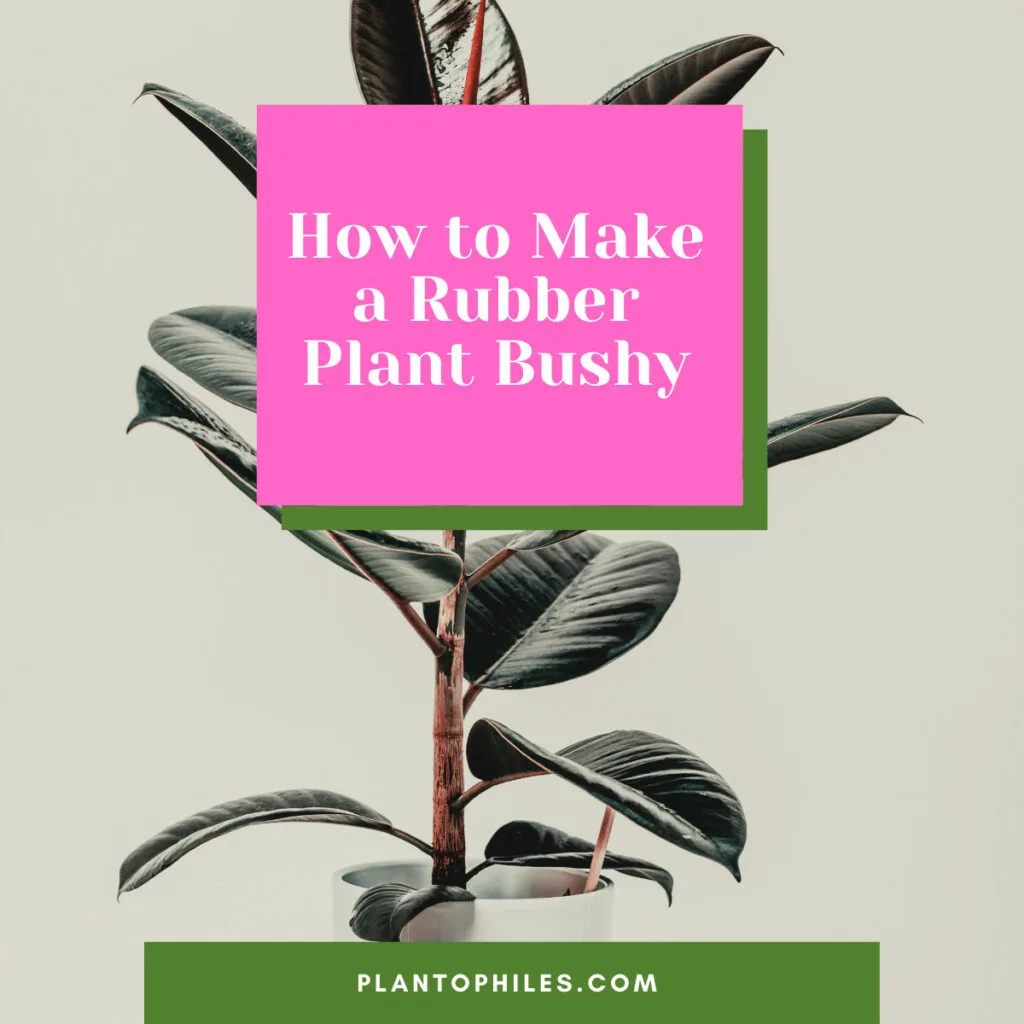
Spindly Rubber Tree Plant — Reasons
Also known as the India rubber plant or India rubber tree, the rubber plant is an important source of natural rubber but is also frequently grown as a houseplant indoors.
With thick, elongated leaves that can grow up to a foot long, along with fig-like fruit that appears on the branches, this plant is a true showstopper in terms of its visual appeal.
However, there are several problems that can arise when you’re attempting to grow the rubber plant outside of its native zone, even indoors.
Although it is often grown as a landscaping plant in places like Arizona, it is rarely grown outdoors outside of its native range of southeast Asia.
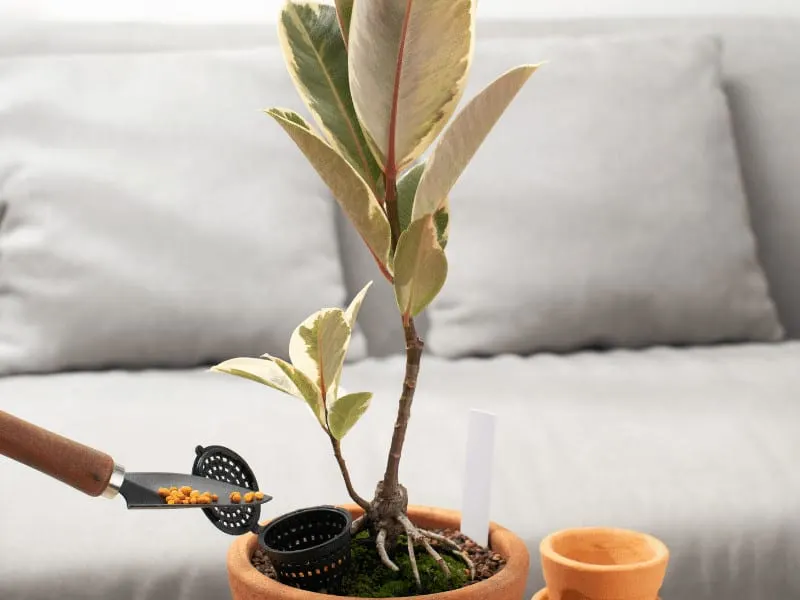
It is a plant that is intolerant of freezing temperatures and likes conditions to be hot and sunny.
Improper lighting, as well as poor pruning, can cause your rubber plant to grow in a spindly, rather than bushy, fashion.
To make your rubber plant grow bushy instead of leggy, you’ll need to address these two problems.
Get your plant in better sunlight – that’s step number one in knowing how to make a rubber plant bushy. Rubber plants prefer bright, indirect sunlight.
If your rubber plant does not have enough light, it will respond by elongating itself unevenly, growing upward toward the light.
This can lead it to grow spindly stems on one section and no growth on the other section of the plant.
Fixing the light situation is key, but you’ll also want to make sure the room temperature is kept consistent (65 to 75 degrees Fahrenheit is perfect) and that your plant has been fertilized with an all-purpose houseplant fertilizer.
Then, you can move on to rectify the spindly growth by pruning your tree.

How to Prune a Rubber Tree
Pruning will help you remove dead growth from your rubber plant while also controlling its growth to make it more suitable for container growing indoors.
The main goal when pruning your rubber tree should be to get rid of any dead and dying leaves.
Then, you can trim your plant so it grows into any shape you’d like.
Only prune your rubber plant during the growing season, ideally in the late spring or early summer.
This way you can ensure your plant will have plenty of time to recover. Use tools that have been sharpened and sterilized.
You may want to wear gloves while you work since rubber trees exude a sticky sap that can make a mess of your hands while you are pruning.
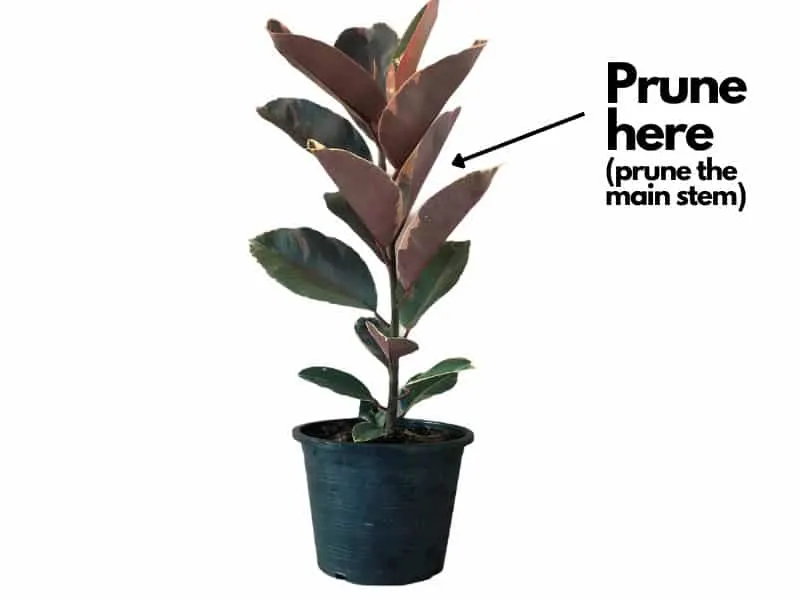
To make your rubber plant bushy, you will want to cut just above the nodes. These are the locations where smaller stem branches appear from the side of a larger main stem.
Try not to over-prune. Always leave at least two to three leaves behind per branch and don’t remove more than five or six living branches in a single session of pruning.
Prune the branches often if you want your plant to grow in a bushier fashion. When you prune the branch, the rubber plant will produce at least two new branches in its place.
Because of this, regular pruning is the easiest way to make a rubber plant bushy!
If you don’t want to waste the healthy living pieces that you cut from your rubber tree, keep in mind that you can save them and use the cuttings to propagate new plants, too.
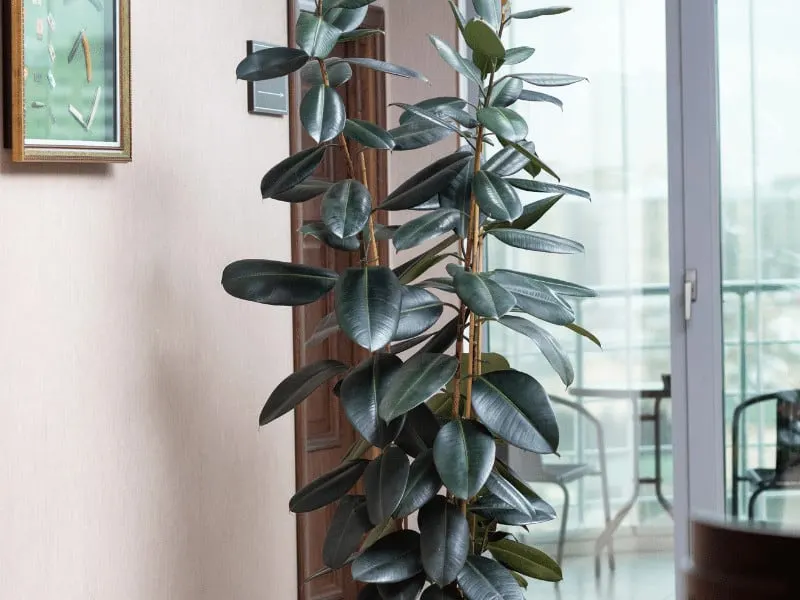
How to Make a Rubber Tree Branch Out
If your rubber plant won’t branch out – another way of saying it won’t grow nice and bushy – then you may want to try some more specifically tailored pruning with something known as apical dominance.
To do this, you’ll remove the top growth on the main stem, making cuts when the plant is still actively growing (spring through fall). Cut at the top first then remove the stem and leaves as far down as you like.
This will encourage branches to sprout lower down on the stem, making it branch out and have a growth habit that is bushier.
Specific pruning like this, along with proper watering and fertilizing, will help you make your rubber plant branch out – and grow in a full, bushy fashion. It will look much healthier, too!
The tips in this guide work for all the different variants of Rubber Plants including the Variegated Rubber Plant and the Burgundy Rubber Plant.
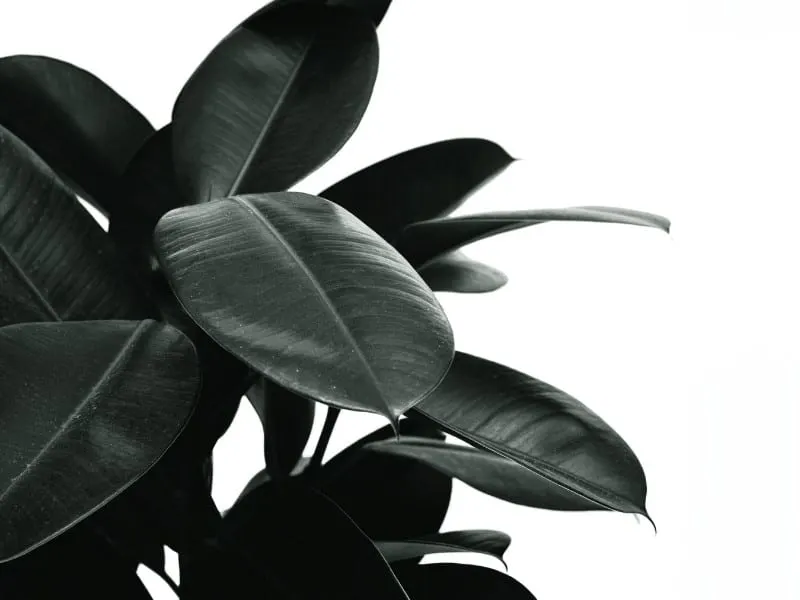
Rubber Plant Sap
The rubber plant is famous for its sap. The white sap is called latex and is used for plastic production. When you prune your rubber plant the sap will flow out of the cutting or wound.
According to Rainforest Alliance, it takes up to 6 years for a rubberwood to be tapped for latex.
Frequently Asked Questions about Rubber Plants
How do you prune a leggy rubber plant?
The easiest way to prune a rubber plant that has become leggy is to cut just where the leaf attaches to the stem or above a leaf scar. Remove a third to a half of the plant’s branches but try not to take too much foliage, as your plant needs this to put on new growth.
Can I cut the top of my rubber plant?
You can cut the top of your rubber plant but it should wait until it has reached the desired height. When you cut from the top, your plant will continue to grow, but it will grow outward instead of upward, putting on bushier growth instead of height.
How do I make my rubber plant thicker?
Pruning is the easiest way to encourage thick growth on your rubber plant. However, you may find that you need to repot it occasionally to allow the tree’s size to increase. If that’s the case, choose a pot that is about one inch larger than the previous pot, and always choose one with good drainage.

Daniel has been a plant enthusiast for over 20 years. He owns hundreds of houseplants and prepares for the chili growing seasons yearly with great anticipation. His favorite plants are plant species in the Araceae family, such as Monstera, Philodendron, and Anthurium. He also loves gardening and is growing hot peppers, tomatoes, and many more vegetables.


